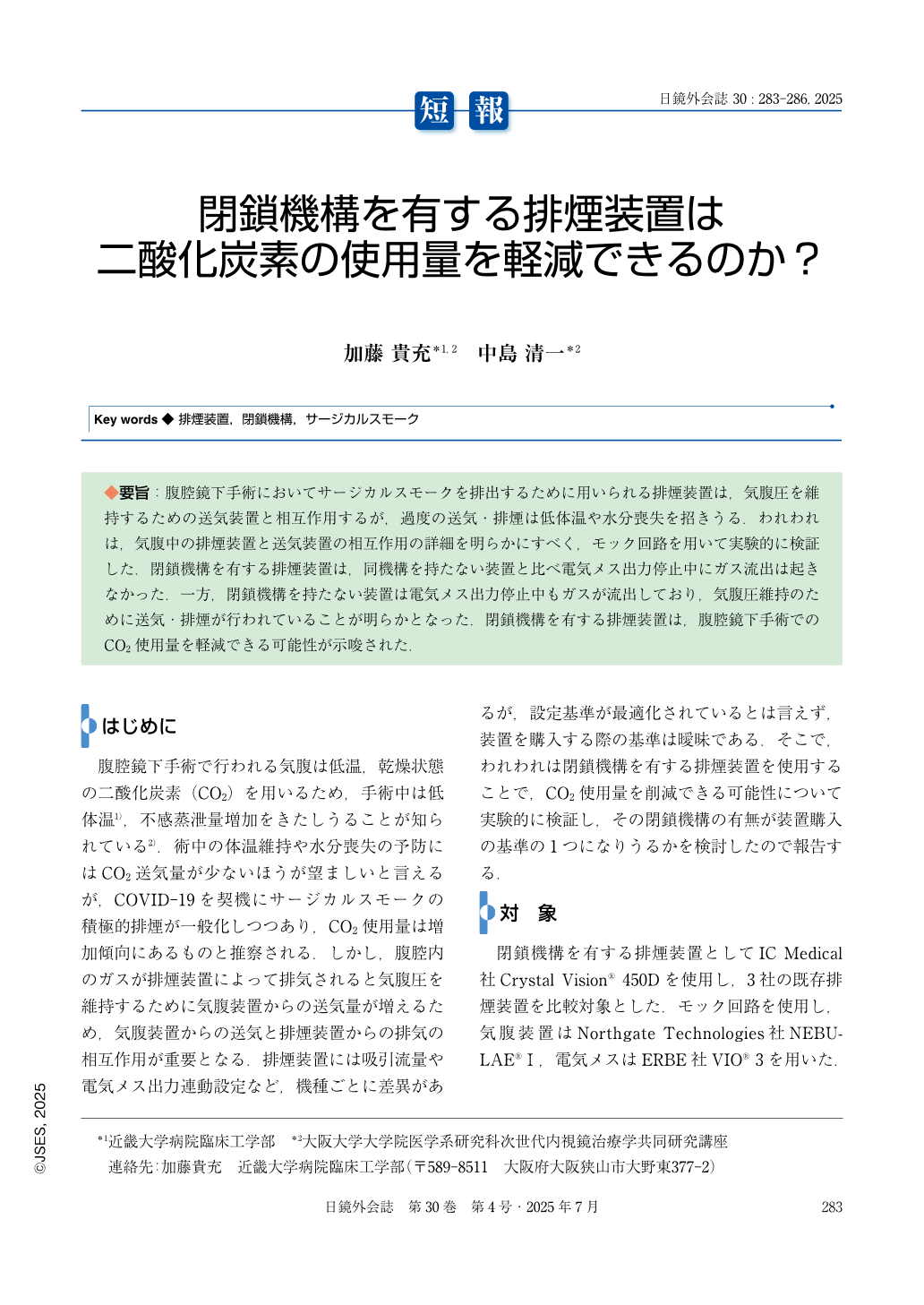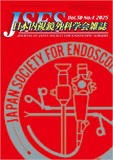Japanese
English
- 有料閲覧
- Abstract 文献概要
- 1ページ目 Look Inside
- 参考文献 Reference
◆要旨:腹腔鏡下手術においてサージカルスモークを排出するために用いられる排煙装置は,気腹圧を維持するための送気装置と相互作用するが,過度の送気・排煙は低体温や水分喪失を招きうる.われわれは,気腹中の排煙装置と送気装置の相互作用の詳細を明らかにすべく,モック回路を用いて実験的に検証した.閉鎖機構を有する排煙装置は,同機構を持たない装置と比べ電気メス出力停止中にガス流出は起きなかった.一方,閉鎖機構を持たない装置は電気メス出力停止中もガスが流出しており,気腹圧維持のために送気・排煙が行われていることが明らかとなった.閉鎖機構を有する排煙装置は,腹腔鏡下手術でのCO2使用量を軽減できる可能性が示唆された.
Insufflation uses carbon dioxide, which can lead to a decrease in patient temperature and fluid loss due to the gas's properties. Smoke evacuation devices are used to remove surgical smoke generated by energy devices by expelling gas from the abdominal cavity. Careful interaction with the insufflation device is necessary to maintain consistent insufflation pressure. In this study, we used a mock circuit to evaluate the interaction between smoke evacuation devices and insufflation devices during insufflation. Devices with a closed system prevented gas leakage in the mock circuit when electrocautery output was stopped ; however, this was not observed in devices without a closed system. On the other hand, models without a closed system exhibited gas outflow even when the smoke evacuation operation was inactive, confirming that a measurable amount of carbon dioxide was being pumped and exhausted during these periods.

Copyright © 2025, JAPAN SOCIETY FOR ENDOSCOPIC SURGERY All rights reserved.


